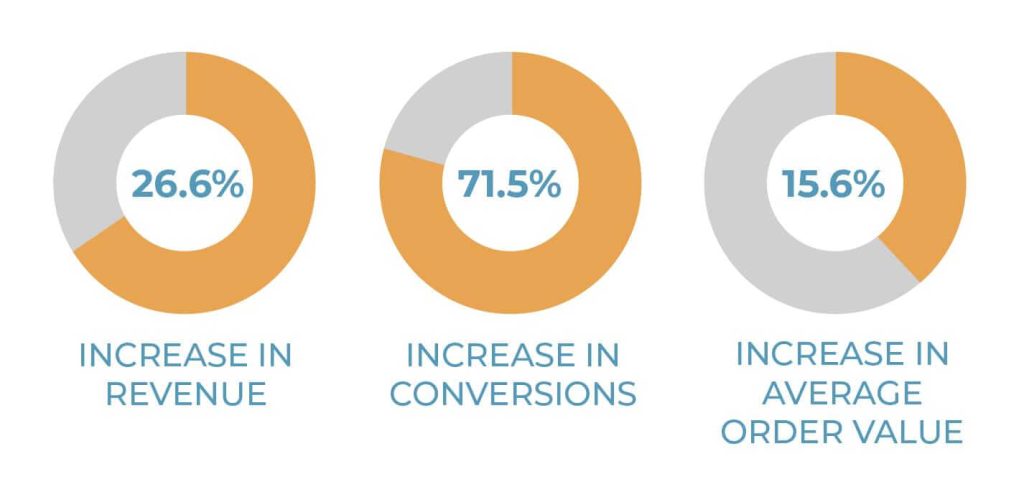Hyper-personalisation is the most advanced form of micro-marketing, as it chases the ultimate goal, maximising the return from each consumer. If you search the term micro-marketing, it comes back with either “collect specific information from segmented groups to use for a marketing campaign” or “it is target marketing to a chosen segment”. This definition has been around for many years, long before the internet was invented. It was the best available means in its day, to refine targeting to the smallest audience you could.
Time has moved on, and technology has ripped holes in systems and practices that have remained static and failed to move with the times. These days there is a collective argument that easily refutes this definition now, although we appreciate that keeping pace with AI technology can be tough, and therefore easy to get left behind.
Pure logic should enable you to see that the refinement of the definition has moved. Instead consider that technology has got us to the point where we are now able to micro-market each consumer on a unique and personal basis, exclusively to them. One-on-one marketing, micro-marketing at its ultimate conclusion. Which in itself is the ultimate definition of personalisation.
Why personalisation – micro-marketing, is so important
Here is a handful of stats, which irrefutable prove the decision to incorporate personalisation into your marketing strategy is valid:
71% of consumers feel frustrated when a shopping experience is impersonal. – Segment
74% of customers feel frustrated when website content is not personalised. – Instapage
47% of consumers check Amazon if the brand they’re shopping with doesn’t provide relevant product suggestions. – SmarterHQ
36% of consumers say retailers need to do more to offer personalised experiences. – Retail TouchPoints
91% of consumers say they are more likely to shop with brands that provide offers and recommendations that are relevant to them. – Accenture
80% of consumers are more likely to purchase a brand that provides personalised experiences. – Epsilon
90% of U.S. consumers find marketing personalisation very or somewhat appealing. – Statista
72% of consumers say they only engage with personalised messaging. – SmarterHQ
80% of frequent shoppers only shop with brands that personalise the experience. – SmarterHQ
56% of online shoppers are more likely to return to a website that recommends products. – Invesp
63% of consumers will stop buying from brands that use poor personalisation tactics. – Smart Insights
66% of consumers say encountering content that isn’t personalised would stop them from making a purchase. – CMO by Adobe
42% of consumers are annoyed when content or communication isn’t personalised. – CMO by Adobe
More than 50% of consumers are willing to share information on products they like to get personalised discounts. – Retail TouchPoints
83% of consumers are willing to share their data to create a more personalised experience. – Accenture
90% of consumers are willing to share personal behavioural data with companies for a cheaper and easier experience. – SmarterHQ
64% of consumers are fine with retailers saving their purchase history and preferences if it allows them to offer more personalised experiences. – BRP Consulting

All these statistics point toward one conclusion, that personalisation achieves the highest rate of return of all marketing strategies available. it therefore ranks higher than any other investment in time and money spent on marketing.
Why hyper-personalisation is so successful
AI hyper-personalisation software is autonomous, it has to be to operate – no humans, no mistakes. It uses artificial intelligence and machine learning to refine personalisation to its ultimate level. Negating the need for human involvement, it uses the buying history and impressions from each consumer’s visits to your site, to identify what that person is most likely to buy next.
Imagine if you will, a fingerprint. Unique to each individual, and accepted by the courts since 1901. So then consider if the buying actions of each consumer you have is also as unique, and could be identified by their actions. You can segment for targeting an audience by assuming anyone who had purchased a like product in the last 3 months, would probably do the same again.
But imagine if you will, if you could refine this to each individual. What if they only ever bought if they had previously clicked on something 3 times before they bought it? What if there were multiple patterns in all these actions which commuted their habits into a uniform process, which you could identify and use to refine your marketing to the point of maximum return? This is what hyper-personalisation does.
You can’t involve human beings in this as it is not viable. Apart from the fact that they are extremely expensive commodities, ask yourself “What am I actually paying for my staff?” Then consider human frailties. The necessity to need sleep, holidays, weekends, time off through sickness. If this is one level then errors and omissions are another. Data is king in this world, and unadulterated, uncorrupted use delivers the highest returns.
Validation of the decision to implement hyper-personalisation
McKinsey, Statista, Forester and Bain all have verified that hyper-personalisation delivers a 20-fold
increased ROI above email marketing, omnichannel marketing, and social media marketing combined. That is huge and higher than ever experienced in ecommerce marketing to date.
It smashes records for increased average order value (AOV), and it almost obliterates your product’s rate of return (RoR). Naturally, if every basket size increases by 10-15%, then it follows the customer lifetime value (CLV/CLTV) increases too. But what else?
Almost unwritten in these figures is the perception of the consumer about you. You are now showing each person what they most want when they want it. That says to them you care, and care to the greatest level. As you can count on one hand the people each of us hold most dear, consumers will quickly identify when someone is going the extra mile to help, understand and nurture them.
Predictive personalisation ranks all your SKUs, for each consumer, according to what has been calculated as the products they are most likely to buy next. It then populates a stylesheet of the top ones, and at identified times sends an email populated with those products to capture these additional sales.
The curmudgeons may baulk at not being able to design the stylesheet, but they fail to appreciate it isn’t about the email design anymore- providing this is of sufficient standard. Avoiding the hype and hullabaloo of persuasion is essential to maintain the purity of this data application.
It isn’t about cajoling the consumer into making a purchase, it is about relationships between their desires, needs, wants and the products you offer. Other than you being the people they love to deal with, you almost don’t come into it. Other elements involved are your price, shipping and customer service which had been predetermined by the consumer, and had already happened, before hyper-personalisation was implemented, to secure the customer in the first place.
Hyper-personalisation is the distinction between the latest, most sophisticated and highest returning marketing investment than that used before. Check out the distinctions between the top 30 players.
Your consumers are never going to go anywhere else with the power of this level of customer satisfaction.
SwiftERM is a Microsoft Partner company. Install a free month’s trial of this software today.
An Index to all our articles is available here.





